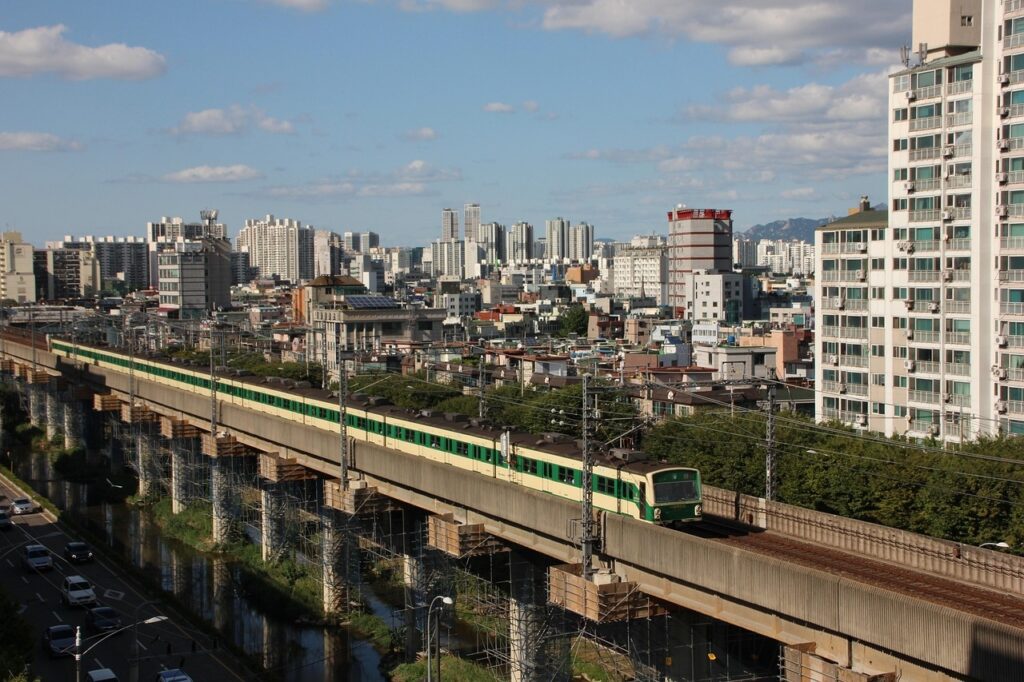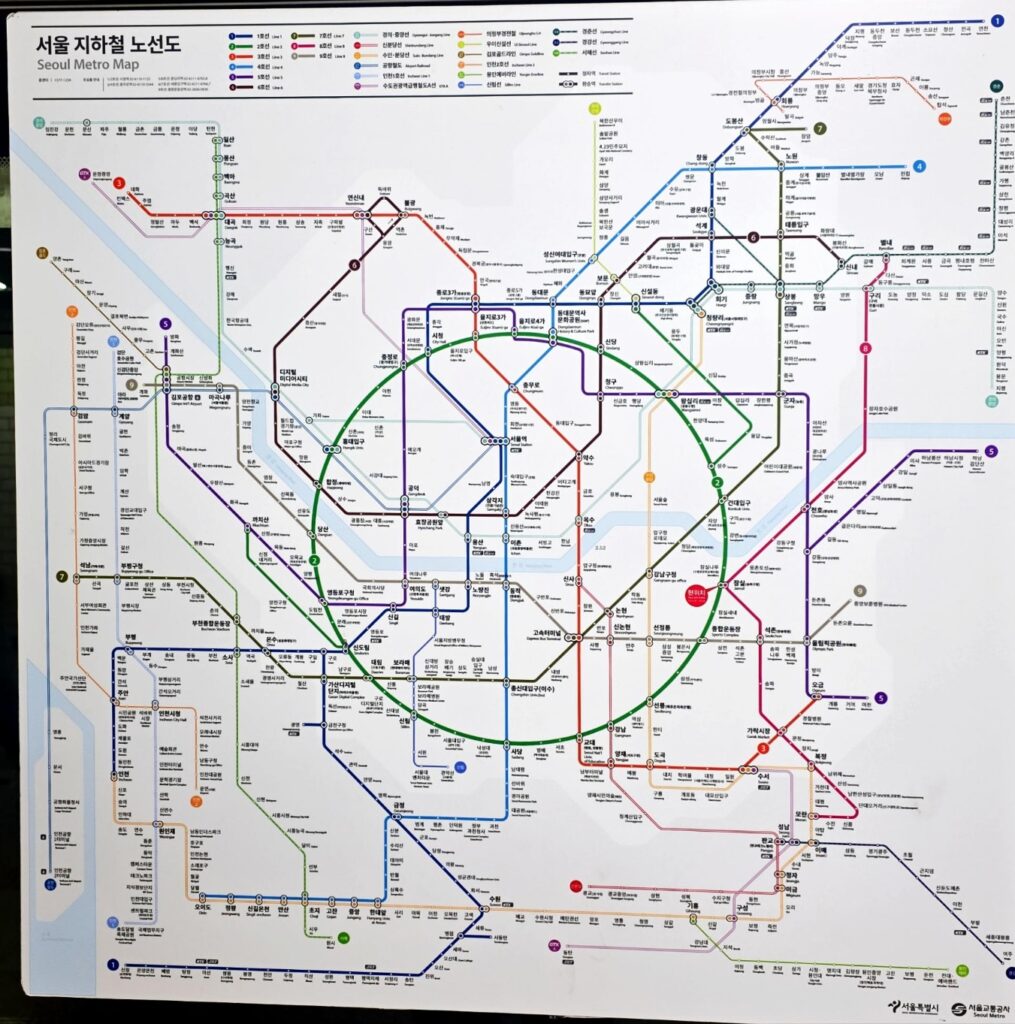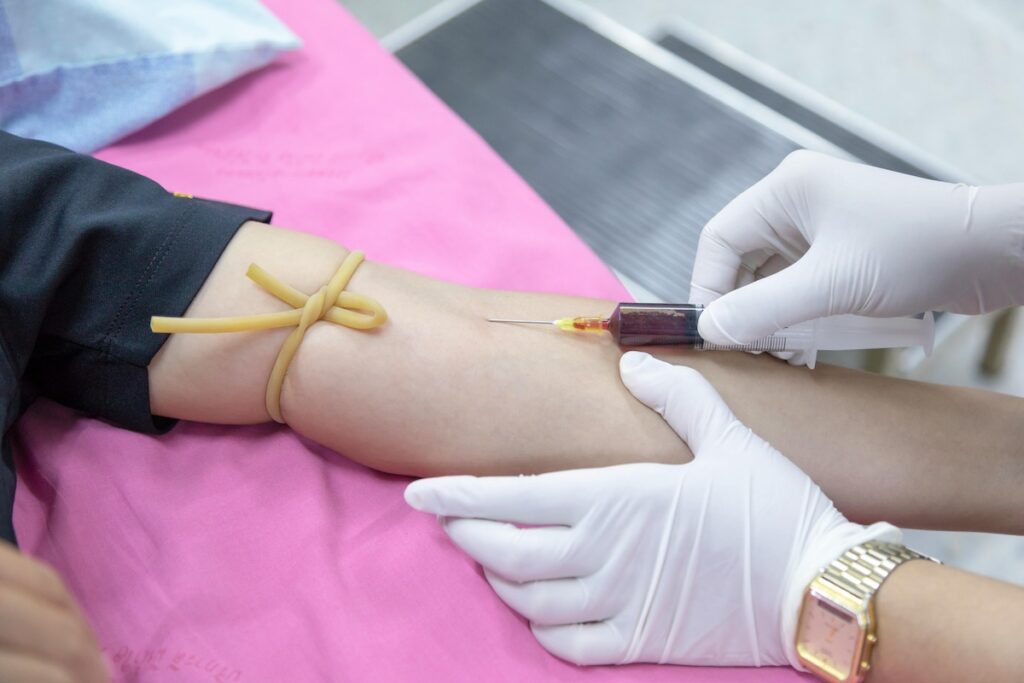Introduction: The Lifeline of a City That Never Stops
If Seoul had a heartbeat, it would pulse along the Subway Line 2 — the circular green line that loops around the city’s busiest districts.
For locals, Line 2 isn’t just transportation; it’s a daily ritual, a time capsule, and a cultural mirror.
Running through Gangnam, Hongdae, Jamsil, Euljiro, and Sinchon, this single subway route captures everything that makes Seoul extraordinary: its speed, its creativity, and its balance between tradition and innovation.
Hop on, and you’ll see students with headphones, businesspeople checking emails, and travelers gazing at neon-lit tunnels. Welcome aboard Seoul’s most iconic subway line — a perfect window into urban life in South Korea.

The Route: A Perfect Circle of 51 Stations
Seoul’s Subway Line 2 (지하철 2호선) opened in 1980 and has since grown into the city’s most used and most symbolic line. Stretching about 60 kilometers and looping completely around the metropolitan core, it connects 51 stations in one endless circle.
Starting from City Hall Station, the line travels clockwise through Euljiro, Gangnam, Jamsil, Sinchon, Hongdae, Seongsu, and back again. Every stop offers a new personality, a new slice of Seoul’s rhythm.
| Notable Stations | What to See |
|---|---|
| Gangnam (강남) | Shopping, K-pop streets, business towers |
| Hongdae (홍대입구) | Youth culture, street performances, nightlife |
| Jamsil (잠실) | Lotte World Tower, Seokchon Lake, family attractions |
| Sinchon (신촌) | University town, cafes, and live music |
| Seongsu (성수) | Trendy art spaces, reused factories, coffee culture |
| Euljiro (을지로3가) | Retro alleys, print shops, and “hip” vintage bars |
Each stop is like turning a page in Seoul’s story — from quiet residential calm to electrifying city energy, all connected by the familiar sound of “The next station is…”
The Technology Behind the Tracks
Seoul’s subway is not just efficient — it’s a masterpiece of smart city design.
Every train car features real-time route screens, charging ports, free Wi-Fi, and bilingual announcements.
The stations themselves are monitored by smart sensors, ensuring safety and air quality.
Even ticketing has evolved — with T-money cards and Naver Pay QR codes, you can glide through the gates with a single tap.
Line 2 exemplifies Korea’s philosophy of “편리함 (pyeon-ri-ham)”, or convenience — the idea that technology should quietly improve daily life without intruding.
Gangnam: The Pulse of Modern Seoul
The moment you step out at Gangnam Station (Line 2, Exit 10–11), the energy hits you like caffeine.
Bright lights, fast fashion, and constant motion define this business and entertainment hub.
Above ground, Gangnam-daero pulses with people and cars. Below ground, massive underground malls connect shoppers to cafes, phone stores, and beauty brands.
The 2호선 here is a lifeline — thousands of commuters flow through every minute. It’s Seoul at its most dynamic: organized chaos wrapped in politeness.
Hongdae and Sinchon: The Line of Youth and Freedom
A few stops west from Gangnam, the vibe changes completely.
Welcome to Hongdae (Hongik University Station) — where art, music, and self-expression reign. Street artists paint murals, buskers play indie songs, and cafes spill out onto colorful sidewalks.
Hop off one stop later at Sinchon, and you’ll feel the academic buzz of Ewha Womans University and Yonsei University. It’s a world of bubble tea shops, late-night tteokbokki stalls, and laughter echoing through side streets.
This part of Line 2 reflects Seoul’s creative heart — spontaneous, bold, and effortlessly cool.
Jamsil: The Family Face of Line 2
As Line 2 curves southeast, it glides into Jamsil, home to Lotte World Tower, Seokchon Lake, and the city’s most beloved amusement park.
Here, the air feels cleaner, the pace calmer, and the skyline grander.
Families line up for ice cream, joggers loop around the lake, and couples take selfies against the 555-meter tower.
What’s fascinating is that you can reach Jamsil directly by subway from almost anywhere in the city — a symbol of how Line 2 connects everyday life to extraordinary experiences.
Seongsu and Euljiro: Seoul’s Industrial Soul Reborn
Seongsu Station is what Brooklyn would be if it spoke Korean. Once a quiet factory district, it’s now full of repurposed warehouses, minimalist cafes, and designer studios.
A short ride away, Euljiro 3-ga is another surprise — once lined with old print shops, it has evolved into a retro-meets-hipster neighborhood where craftsmen and baristas coexist.
Both places show how Seoul reinvents itself without erasing its past — and Line 2 is the thread that ties these transformations together.
The Unspoken Etiquette of Riding Line 2
Riding the subway in Seoul is easy — but understanding the unspoken manners makes you a true local.
- 🚇 Keep right on escalators. The left side is for walking.
- 🔇 Stay quiet in the train. Loud conversations or phone calls are frowned upon.
- 🪑 Priority seats are sacred. Even if the train is full, they are reserved for elderly, pregnant, or disabled passengers.
- 🧳 Stand aside before boarding. Let people exit first.
- 🍔 No eating or drinking. Trains are spotless for a reason.
These rules aren’t heavily enforced by staff — they’re upheld by social respect. That’s Seoul’s secret: collective discipline without visible control.

Crossing Cultures Underground
What makes Line 2 special isn’t just its efficiency — it’s how it reveals Seoul’s character.
You can start in the student chaos of Hongdae, pass through the business suits of Gangnam, and end at Seokchon Lake’s serene reflections — all within an hour.
No taxi, no traffic, no stress — just smooth transitions between worlds.
For travelers, it’s the most authentic way to see Seoul — not from above, but from within.
Green Means Go: Sustainability on Track
The color green on Line 2 isn’t random. It symbolizes growth, connection, and sustainability.
Seoul Metro has invested in energy-efficient trains, solar-powered stations, and noise-reducing tracks.
Many stations, like Samseong and Seolleung, even feature vertical gardens and art installations that reflect eco-conscious living.
The green loop, in a way, mirrors Seoul’s environmental ambitions — always moving forward, but in balance.
Seoul vs. Other Cities: Why Line 2 Feels Different
| Feature | Seoul Subway Line 2 | Tokyo / London / NYC |
|---|---|---|
| Real-time digital maps | ✅ Every train & platform | Limited |
| Wi-Fi & phone signal | ✅ Always available | Patchy |
| Cleanliness | ⭐⭐⭐⭐⭐ | ⭐⭐–⭐⭐⭐ |
| Safety cameras | Installed at all cars | Partial |
| Punctuality | Within 1 min average delay | Often 5–10 min delay |
| Fare convenience | T-money, QR, mobile | Paper tickets still common |
Seoul’s subway feels predictable yet personal — designed for human needs, not just transit efficiency.
It’s fast, quiet, and deeply integrated into daily life — a perfect metaphor for modern Korea.
Traveler Tips: How to Make the Most of Line 2
- 🕒 Avoid rush hours (8–9 AM & 6–7 PM). Trains can get extremely crowded.
- 💳 Get a T-money card. Works on all buses, subways, and convenience stores.
- 📱 Download Naver Map or KakaoMap. Both support English navigation.
- 🚉 Don’t forget your transfer discounts! Transfers between subway lines are free within 30 minutes.
- 🪞 Explore station art. Stops like Dongdaemun History & Culture Park feature exhibitions underground.
A City in Motion: What Line 2 Really Represents
To ride Line 2 is to see Seoul breathe — fast but precise, crowded but kind, high-tech yet human.
It circles the entire city like a green thread tying together people, stories, and dreams.
At every stop, Seoul shows another face:
the ambition of Gangnam, the creativity of Hongdae, the nostalgia of Euljiro, the calm of Jamsil.
And in that circle lies the true essence of Seoul — constant motion, endless connection.
Conclusion: The Green Circle That Never Ends
Seoul Subway Line 2 isn’t just a train route. It’s the city’s rhythm, its architecture in motion, and its collective heartbeat.
From morning rush to midnight calm, it connects millions of lives, seamlessly and silently.
Next time you visit Seoul, skip the taxi.
Hop on Line 2 — and you’ll discover that the best way to understand this city is to ride its circle.
🌐 External Reference
For official maps and schedules: Seoul Metro Official Site

